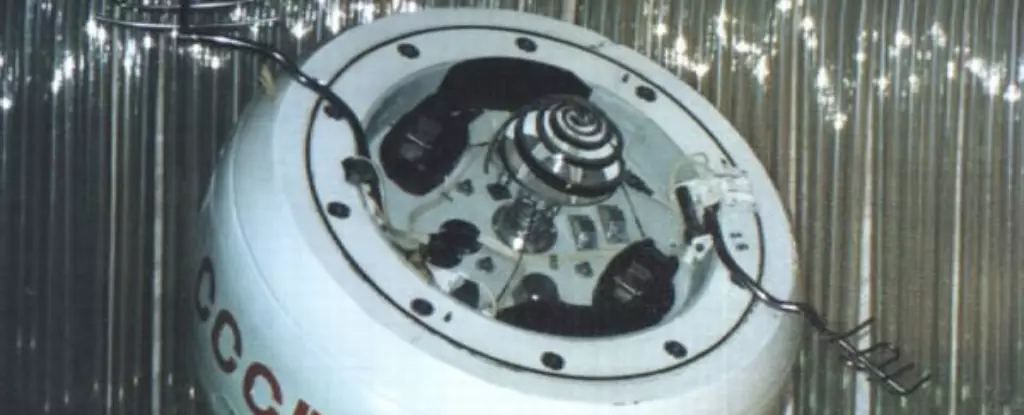Launched on March 31, 1972, Kosmos-482 was a relic of the ambitious Soviet space program, emerging from an era defined by intense competition between superpowers. The mission, initially intended for Venus exploration, remains shrouded in ambiguity and represents a significant chapter in the saga of space exploration. With this satellite now facing reentry into the Earth’s atmosphere, we are presented with a unique opportunity to reflect not only on this particular mission but also on the broader implications of our endeavors in space during the Cold War.
Soviet programs in the 1960s and 70s were characterized by secrecy and a profound sense of national pride. Although they advanced the frontiers of space science—most notably with successful missions like Venera 8—information regarding missions was rarely disclosed until they reached successful conclusions. Kosmos-482 is a case in point, as the Soviet Union never officially acknowledged the launch failure. In an age of propaganda and secrecy, the mere designation “Kosmos-482” became a cryptic emblem of disappointment.
The Unfortunate Fate of Kosmos-482
After its launch from the Baikonur Cosmodrome aboard a Molniya-8K78M rocket, Kosmos-482 encountered a critical failure due to a timer anomaly, flinging it into an unsustainable orbit. The satellite split into several fragments—a situation reminiscent of subsequent launch mishaps like the ill-fated Phobos-Grunt in 2012. This pattern of misfortune highlights the relentless challenges of space exploration, where triumph can often be eclipsed by technical failures.
Despite being tethered to a 394-kilometer by 156-kilometer orbit with a 52-degree inclination, Kosmos-482 has ultimately lingered in Earth’s atmosphere for over five decades. As the international community gears up for its imminent reentry, the satellite’s relic status serves as a reminder of both the ambition of its creators and the inevitable decay that grips even the most sophisticated technological endeavors.
The Spectacle of Reentry
As we turn our eyes to the skies, it is vital to understand the anticipation surrounding Kosmos-482’s reentry. Due to its relatively small weight of 500 kilograms, concerns about its descent are tempered. Unlike larger satellites, which pose a greater risk upon reentry, Kosmos-482’s relatively light payload offers a promise of safety for those on the ground.
Experts speculate that parts of the satellite, initially designed to withstand the harsh conditions of Venus’ atmosphere, may survive the final plunge through our own. The uncertainty surrounding factors such as atmospheric pressures and the degradation due to aging materials contributes to the growing intrigue, making this reentry not just a technical event but a dramatic conclusion to decades of orbiting silence.
Increasing Congestion and the Space Debris Crisis
Kosmos-482 is not alone as it makes its anticipated descent. The growing concern over space debris looms larger with each passing year. This satellite’s fate unfolds amidst a cacophony of increasingly crowded low Earth orbit, marked by the proliferation of megaconstellations from private companies such as SpaceX and OneWeb. The landscape has changed drastically since 1972, transitioning from a pioneering spirit to pressing challenges surrounding space governance and the sustainability of orbital environments.
As numerous new satellites are launched with the aim of bridging global communication gaps, the inheritors of the cosmos face a dual responsibility: to push the boundaries of technology and to safeguard the very fabric of space above us. The irony is striking—innovations that aim to connect the world are also contributing to the risk of collision and uncontrolled reentry events.
A Glimpse Into the Future
Despite Kosmos-482’s impending demise, this event stirs curiosity and reflection about the future of space exploration. Each reentry serves as a celebration of past explorations while pressing us to consider the implications of our actions in the cosmos. As we watch the drama unfold, we must ask ourselves: what lessons will we glean from Kosmos-482? As the memory of this Soviet mission flickers out among the stars, it urges us to embrace innovative responsibilities as we chart a course into the future of space exploration.
So, as Kosmos-482 prepares for its fateful descent, it is a poignant reminder of the fragility of our technological aspirations and the history embedded in every fragment of space debris—a relic tumbling across the twilight sky, inviting us to ponder both our past and our future.


Leave a Reply